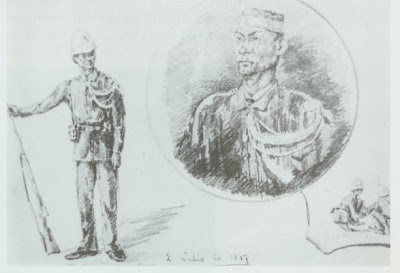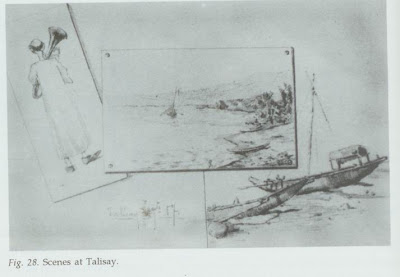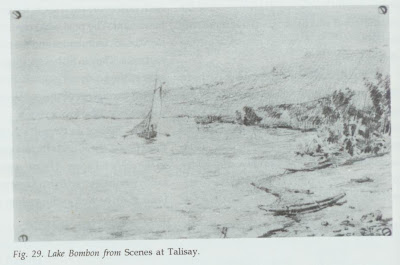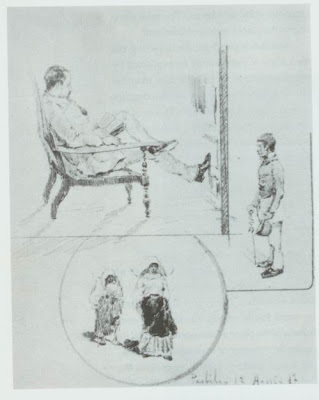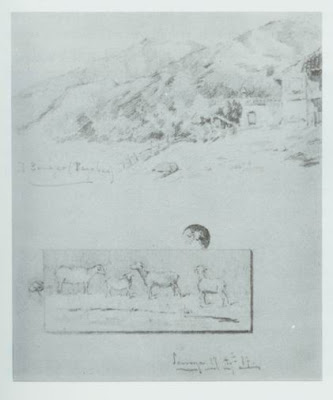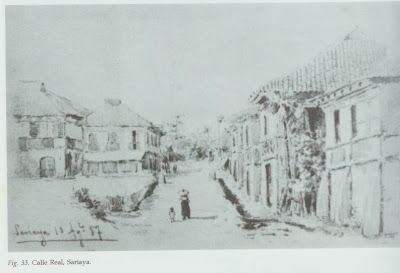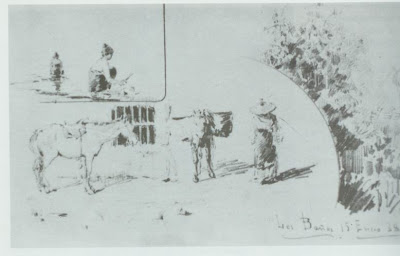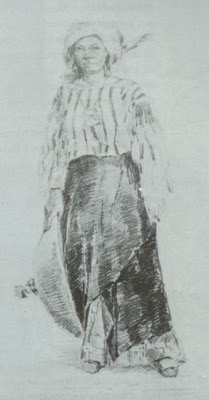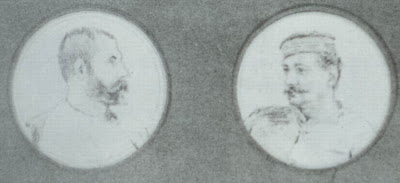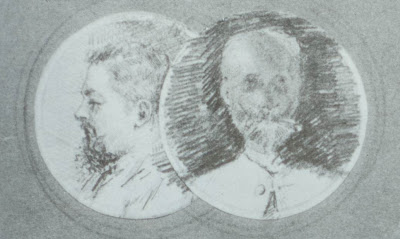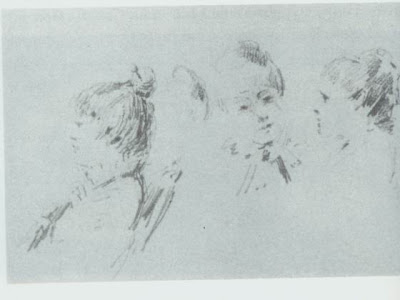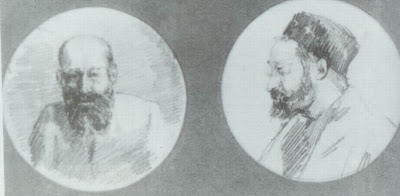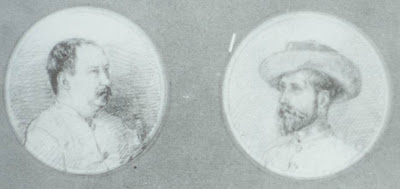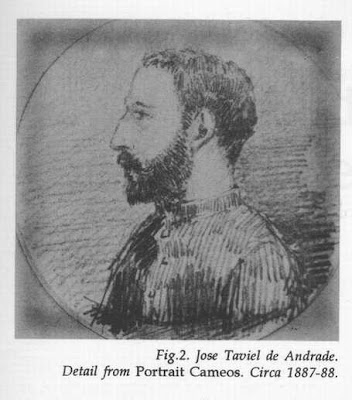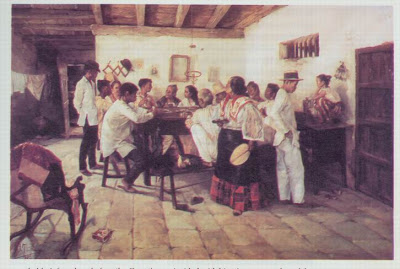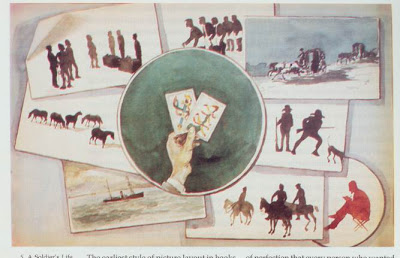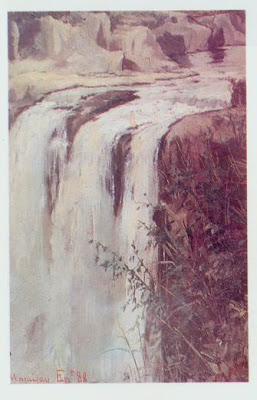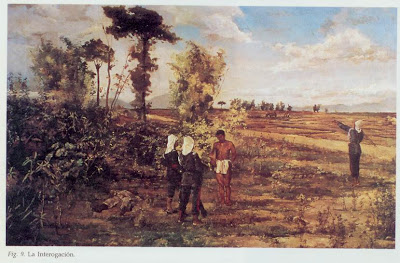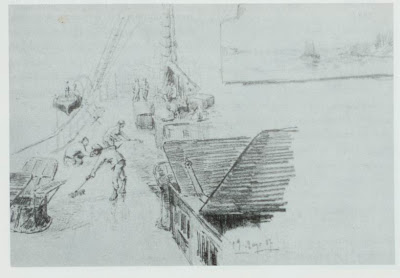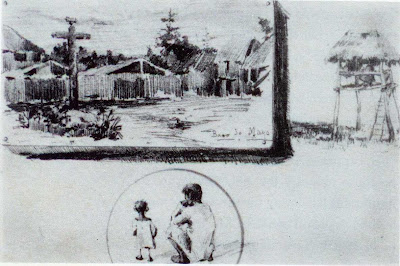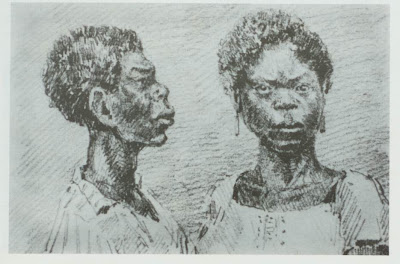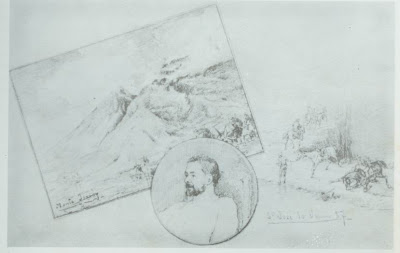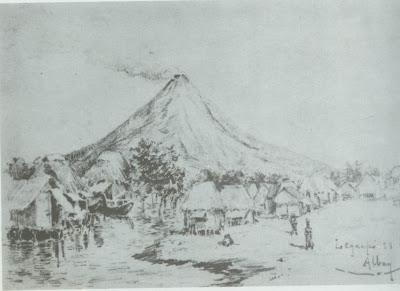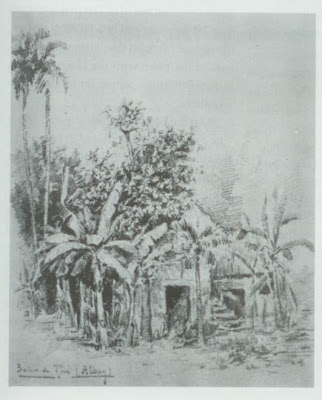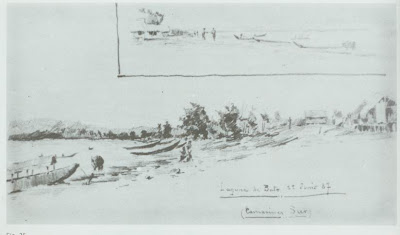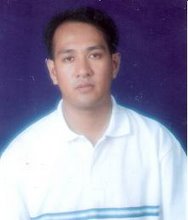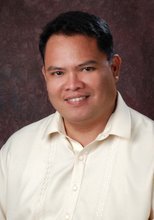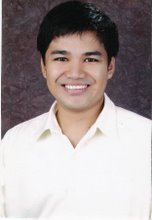The Philippines and Bicol Through the Eyes and Pen
of Rizal’s Bodyguard, Jose Taviel de Andrade.
A paper read at the First Regional Rizal Conference
held on December 12, 2007 at the USI Auditorium.
By: Paulo Felix Paulix B. Robosa
An Encounter of Artists.
When Rizal returned to the Philippines shortly after the publication of his Noli me Tangere, a Spanish lieutenant of the Civil Guard, Lt. Jose Taviel de Andrade had just been reassigned to take command of the Civil Guards in Rizal’s hometown of Calamba.
Upon arriving in Calamba, Rizal settled into a calm and peaceful life, visiting acquaintances, setting up a medical clinic and launching a backyard physical fitness program. But the friars in Manila, infuriated by the unsavory portrayal of their character in the Noli, proceeded to pressure the government to take action. In response, Governor General Emilio Terrero placed the controversial Filipino author into the custody of Lt. Taviel de Andrade, while awaiting the decision of the Commission of Censors.
Rizal wrote that his relationship with Taviel de Andrade was not only pleasant but also cordial and described him to Blumentritt as “a cultured and educated lieutenant of the civil guard” who, “belonged to a noble family, speaks English and French and knows how to draw.” Although, the lieutenant was presented as a constabulary escort, he was also instructed to serve as watchdog, tailing Rizal wherever he went and read his letters.
Taviel de Andrade, years later revealed to Rizal’s biographer, Wenceslao Retana, that to ease the strain of their relationship, he tried to build a friendship with Rizal. He himself described his charge as “a well bred man with fine manners, a true gentleman”. There friendship resulted in Rizal avoiding trouble because of the sympathy of the lieutenant and other Spanish officials when his enemies started spreading false rumors that he was a German spy. In the end, Rizal always referred to the lieutenant as his ”good friend”, inscribed him a copy of his annotation of Morga’s Sucesos de las isles Filipinas and before his trial and execution, recruited Taviel de Andrade’s younger brother Luis as his military counsel.
Looking back at their friendship some years after Rizal’s execution, Taviel de Andrade mused, “although we never grew intimate, an open friendship grew between us that, I must confess, was most pleasing to me in that wilderness”.
Their friendship was helped, of course, by the fact that the two did not only share a common first name, but both spoke English and French and had an avocation to the Visual Arts. If anything is to be read from this episode in Rizal’s life is the sure affinity of even total strangers, from opposite political persuasions to the recognition and appreciation of goodwill, culture and the universal kinship of artists and thus we see a moving though simple instance of political tolerance and human understanding.
Jose Taviel de Andrade y Lerdo de Tejada
Jose Taviel de Andrade was born in Seville on May 25 1857. He began his military career as a cadet in the Andalucian district in 1873. After a brief stint in the minor forts of Morocco and Africa, he saw action at home in the campaign against the Carlists, earning a promotion to the rank of lieutenant in 1876. During a later assignment to Ceuta, North Africa, he arbitrarily freed several prisoners, and was briefly suspended and reprimanded.
Taviel de Andrade was assigned to the Philippines in 1880, serving in the Artillery unit in Manila and later in the Visayas. In 1883, he was given briefly a command in Jolo, leading Filipino exiles in battle against the Moros.
After receiving numerous military honors for his campaign against the Moros, in 1885 he was assigned to the corps of Engineers in Manila and he remained in Luzon until 1888. He was assigned to the first of three regiments of Guardia Civil wherein he served as secretary of the colonel of the first Regiment who made inspection trips to southern Luzon. Later he was assigned to the Eight Company of the regiment whose central station was in Calamba, Laguna where Taviel de Andrade received a byline in history after being assigned an uneventful and awkward assignment as the custodian of Jose Rizal who arrived in Calamba on the 5th of August 1887.
In 1888, Taviel de Andrade left for Spain but returned to the Philippines three years after, with the rank of captain to serve as secretary to the provincial government of Mindanao. He later distinguished himself and received first class Military honors for his performance in operations against the Muslims of Lake Lanao, Malabang, Iligan and Linamon.
In 1895, he was engaged in missions to win friendship with the Muslim Sultans and Datus in behalf of the Spanish crown and was able to control the power of the renegade chief Amoy Pacpac earning the Cruz de Carlos III award and was appointed Infantry commander.
When Rizal was executed in 1896, he was appointed Politico-Military Governor of Zamboanga and was awarded the “Medalla de Mindanao” and cited for “imbuing the Moros with love and respect for Spain”. In the same year, he requested a certification of bachelorhood as a requirement presumably to marry a Filipina.
He left the Philippines for the last time in 1897 and was later assigned to the war against the Americans in Cuba, arriving there on Christmas Eve and at War’s end returned to Spain in1898 and continued his career in his homeland. After receiving more awards for his services in the Philippines and Cuba he was promoted to the rank of lieutenant colonel in 1906 and was given retirement in 1909.
From the Past and Abroad: A View of the Philippines and Bicol.
A cache of paintings and drawings by Jose Taviel de Andrade, rediscovered in Spain and exhibited in the Ayala Museum is cause for jubilation for local Cultural enthusiasts and connoisseurs, students of Philippine History, Philippine Art and Rizal. The find is not only eye-opening but a trail blazing event in the study of Philippine History and Culture because it opens new insights in the way our Spanish officials operated and viewed their Philippine colony.
Jose Taviel de Andrade is not unknown in Philippine history because he played a distinct role in the life of our National Hero and neither is he an amateur in the field of art as he served as a professor at the Escuela Superior de Pintura, Escultura, y Gravado de Manila.
Taviel de Andrade was appointed to the faculty of the School in 1893 and taught scenographic painting, watercolor, pastel, charcoal and pencil. One of his major oil paintings merited to be included in an album of paintings that was presented to the Governor-General. Judging from the present collection, we find that the majority of his work was done in a period of creative outburst while Taviel de Andrade was in Luzon while assigned to his post in the First Regiment just before he was to be given custody of Rizal.
While there, his first assignment was in Taytay, then in the district of Morong and starting on May 12, 1887 he accompanied his superior in an inspection trip to the south of Luzon and the Bicol region. It was in this trip that he gave us graphite sketches of the places and people he visited inscribing on occasion the name of the place and a date. From this graphite collection we can trace his trip by boat which landed in the south and the party traveled by land moving progressively northwards.
The other part of the collection is made up of oil paintings of famous Philippine land marks and two detailed work on some Philippine pastime and activity. By the dates on the works, it is not far fetched to think that he may have done some of this oil painting while he was in Calamba and assigned to Rizal. It would not be impossible if we were to imagine that the two Jose’s might have discussed or compared their works.
No record is to be found if Taviel de Andrade received specialized training in Art but most likely received his from the Academia Militar which emphasized draftsmanship, clarity, detail and accuracy, thus, apart from the watercolor, and oil paintings, what we see are sketches probably done very fast and with the most striking details recorded from an unstudied viewpoint. Some sketches are arranged in vignettes giving us different scenes arranged in one picture, this technique being popular in magazines at that time.
This collection is impressive because of its size and the subject matter that it chooses to depict namely obscure places in Luzon specially the Bicol Region, places hardly read in history books but today surely given attention because our National Hero’s friend chose to record them for posterity. This collection of work is not only a fine addition to our growing knowledge and awareness of our past but most importantly it invites us to renewed exploration and research because the discovery of this work, after more than 100 years, underscores how little we know of what we have and what we were.
Conclusion
In our struggle to assert ourselves on the face of the Earth, our predecessors had to teach us to cherish and chant exclusively about the exemplary zeal and courage of our heroes, and the shining superiority of our homegrown heritage. We needed this during the early stages of our national development; now we need new levels of awareness, this time to enrich that identity and cultural wealth.
Unaware and unguarded, we were waylaid into this protracted chanting and adulation of our chosen heroes and led us into a parochial brand of nationalism that has left us poor in intelligence and shortsighted in vision. Our period of struggle against the Spanish is very distant now and time must allow us maturity in awareness, to totally accept our past as it happened; otherwise, we will be left with nothing but silent, lifeless heroes. History is appealing when it is stimulating, useful and relevant and thus leading us to a deeper study of it. History takes form once we accept and examine it as interplay of human circumstances.
How sympathetically and lovingly did this officer of the hated “Spanish enemy” depict the appearance and activities of the colonial subjects of the Spanish crown. Taviel de Andrade belonged to a group of peninsular artists who wielded their brush with both cheerful and somber understanding and thus honorably left us with truly substantial records of our past. This presentation of the works of Taviel de Andrade affords us the realization of the resplendence of our culture. Our history can only acquire richer colors and textures: our artistic heritage can only be widened as we welcome this discovery from the past.
End
of Rizal’s Bodyguard, Jose Taviel de Andrade.
A paper read at the First Regional Rizal Conference
held on December 12, 2007 at the USI Auditorium.
By: Paulo Felix Paulix B. Robosa
An Encounter of Artists.
When Rizal returned to the Philippines shortly after the publication of his Noli me Tangere, a Spanish lieutenant of the Civil Guard, Lt. Jose Taviel de Andrade had just been reassigned to take command of the Civil Guards in Rizal’s hometown of Calamba.
Upon arriving in Calamba, Rizal settled into a calm and peaceful life, visiting acquaintances, setting up a medical clinic and launching a backyard physical fitness program. But the friars in Manila, infuriated by the unsavory portrayal of their character in the Noli, proceeded to pressure the government to take action. In response, Governor General Emilio Terrero placed the controversial Filipino author into the custody of Lt. Taviel de Andrade, while awaiting the decision of the Commission of Censors.
Rizal wrote that his relationship with Taviel de Andrade was not only pleasant but also cordial and described him to Blumentritt as “a cultured and educated lieutenant of the civil guard” who, “belonged to a noble family, speaks English and French and knows how to draw.” Although, the lieutenant was presented as a constabulary escort, he was also instructed to serve as watchdog, tailing Rizal wherever he went and read his letters.
Taviel de Andrade, years later revealed to Rizal’s biographer, Wenceslao Retana, that to ease the strain of their relationship, he tried to build a friendship with Rizal. He himself described his charge as “a well bred man with fine manners, a true gentleman”. There friendship resulted in Rizal avoiding trouble because of the sympathy of the lieutenant and other Spanish officials when his enemies started spreading false rumors that he was a German spy. In the end, Rizal always referred to the lieutenant as his ”good friend”, inscribed him a copy of his annotation of Morga’s Sucesos de las isles Filipinas and before his trial and execution, recruited Taviel de Andrade’s younger brother Luis as his military counsel.
Looking back at their friendship some years after Rizal’s execution, Taviel de Andrade mused, “although we never grew intimate, an open friendship grew between us that, I must confess, was most pleasing to me in that wilderness”.
Their friendship was helped, of course, by the fact that the two did not only share a common first name, but both spoke English and French and had an avocation to the Visual Arts. If anything is to be read from this episode in Rizal’s life is the sure affinity of even total strangers, from opposite political persuasions to the recognition and appreciation of goodwill, culture and the universal kinship of artists and thus we see a moving though simple instance of political tolerance and human understanding.
Jose Taviel de Andrade y Lerdo de Tejada
Jose Taviel de Andrade was born in Seville on May 25 1857. He began his military career as a cadet in the Andalucian district in 1873. After a brief stint in the minor forts of Morocco and Africa, he saw action at home in the campaign against the Carlists, earning a promotion to the rank of lieutenant in 1876. During a later assignment to Ceuta, North Africa, he arbitrarily freed several prisoners, and was briefly suspended and reprimanded.
Taviel de Andrade was assigned to the Philippines in 1880, serving in the Artillery unit in Manila and later in the Visayas. In 1883, he was given briefly a command in Jolo, leading Filipino exiles in battle against the Moros.
After receiving numerous military honors for his campaign against the Moros, in 1885 he was assigned to the corps of Engineers in Manila and he remained in Luzon until 1888. He was assigned to the first of three regiments of Guardia Civil wherein he served as secretary of the colonel of the first Regiment who made inspection trips to southern Luzon. Later he was assigned to the Eight Company of the regiment whose central station was in Calamba, Laguna where Taviel de Andrade received a byline in history after being assigned an uneventful and awkward assignment as the custodian of Jose Rizal who arrived in Calamba on the 5th of August 1887.
In 1888, Taviel de Andrade left for Spain but returned to the Philippines three years after, with the rank of captain to serve as secretary to the provincial government of Mindanao. He later distinguished himself and received first class Military honors for his performance in operations against the Muslims of Lake Lanao, Malabang, Iligan and Linamon.
In 1895, he was engaged in missions to win friendship with the Muslim Sultans and Datus in behalf of the Spanish crown and was able to control the power of the renegade chief Amoy Pacpac earning the Cruz de Carlos III award and was appointed Infantry commander.
When Rizal was executed in 1896, he was appointed Politico-Military Governor of Zamboanga and was awarded the “Medalla de Mindanao” and cited for “imbuing the Moros with love and respect for Spain”. In the same year, he requested a certification of bachelorhood as a requirement presumably to marry a Filipina.
He left the Philippines for the last time in 1897 and was later assigned to the war against the Americans in Cuba, arriving there on Christmas Eve and at War’s end returned to Spain in1898 and continued his career in his homeland. After receiving more awards for his services in the Philippines and Cuba he was promoted to the rank of lieutenant colonel in 1906 and was given retirement in 1909.
From the Past and Abroad: A View of the Philippines and Bicol.
A cache of paintings and drawings by Jose Taviel de Andrade, rediscovered in Spain and exhibited in the Ayala Museum is cause for jubilation for local Cultural enthusiasts and connoisseurs, students of Philippine History, Philippine Art and Rizal. The find is not only eye-opening but a trail blazing event in the study of Philippine History and Culture because it opens new insights in the way our Spanish officials operated and viewed their Philippine colony.
Jose Taviel de Andrade is not unknown in Philippine history because he played a distinct role in the life of our National Hero and neither is he an amateur in the field of art as he served as a professor at the Escuela Superior de Pintura, Escultura, y Gravado de Manila.
Taviel de Andrade was appointed to the faculty of the School in 1893 and taught scenographic painting, watercolor, pastel, charcoal and pencil. One of his major oil paintings merited to be included in an album of paintings that was presented to the Governor-General. Judging from the present collection, we find that the majority of his work was done in a period of creative outburst while Taviel de Andrade was in Luzon while assigned to his post in the First Regiment just before he was to be given custody of Rizal.
While there, his first assignment was in Taytay, then in the district of Morong and starting on May 12, 1887 he accompanied his superior in an inspection trip to the south of Luzon and the Bicol region. It was in this trip that he gave us graphite sketches of the places and people he visited inscribing on occasion the name of the place and a date. From this graphite collection we can trace his trip by boat which landed in the south and the party traveled by land moving progressively northwards.
The other part of the collection is made up of oil paintings of famous Philippine land marks and two detailed work on some Philippine pastime and activity. By the dates on the works, it is not far fetched to think that he may have done some of this oil painting while he was in Calamba and assigned to Rizal. It would not be impossible if we were to imagine that the two Jose’s might have discussed or compared their works.
No record is to be found if Taviel de Andrade received specialized training in Art but most likely received his from the Academia Militar which emphasized draftsmanship, clarity, detail and accuracy, thus, apart from the watercolor, and oil paintings, what we see are sketches probably done very fast and with the most striking details recorded from an unstudied viewpoint. Some sketches are arranged in vignettes giving us different scenes arranged in one picture, this technique being popular in magazines at that time.
This collection is impressive because of its size and the subject matter that it chooses to depict namely obscure places in Luzon specially the Bicol Region, places hardly read in history books but today surely given attention because our National Hero’s friend chose to record them for posterity. This collection of work is not only a fine addition to our growing knowledge and awareness of our past but most importantly it invites us to renewed exploration and research because the discovery of this work, after more than 100 years, underscores how little we know of what we have and what we were.
Conclusion
In our struggle to assert ourselves on the face of the Earth, our predecessors had to teach us to cherish and chant exclusively about the exemplary zeal and courage of our heroes, and the shining superiority of our homegrown heritage. We needed this during the early stages of our national development; now we need new levels of awareness, this time to enrich that identity and cultural wealth.
Unaware and unguarded, we were waylaid into this protracted chanting and adulation of our chosen heroes and led us into a parochial brand of nationalism that has left us poor in intelligence and shortsighted in vision. Our period of struggle against the Spanish is very distant now and time must allow us maturity in awareness, to totally accept our past as it happened; otherwise, we will be left with nothing but silent, lifeless heroes. History is appealing when it is stimulating, useful and relevant and thus leading us to a deeper study of it. History takes form once we accept and examine it as interplay of human circumstances.
How sympathetically and lovingly did this officer of the hated “Spanish enemy” depict the appearance and activities of the colonial subjects of the Spanish crown. Taviel de Andrade belonged to a group of peninsular artists who wielded their brush with both cheerful and somber understanding and thus honorably left us with truly substantial records of our past. This presentation of the works of Taviel de Andrade affords us the realization of the resplendence of our culture. Our history can only acquire richer colors and textures: our artistic heritage can only be widened as we welcome this discovery from the past.
End
